When I was younger, I seemed to date those women who had more shoes in their house than books. Similarly, I liked women who are comfortable in their own skin; but was really turned on by those who are comfortable in their own shoes. And then I got older. I was slowly made to understand how a woman desires a new pair of shoes.
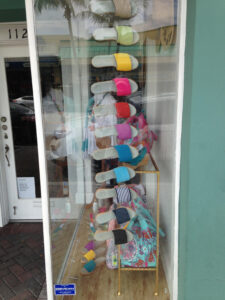
The female foot has been revered as an erotic incitement in many cultures. Small, narrow, and soft; the features of a woman’s foot have been appreciated throughout history. For a thousand years in China, it was considered cultured and sexually attractive for a woman to have bound feet. Beyond weekly washing and perfuming, the feet were kept always bound tightly. With a few exceptions, until the Renaissance, women’s footwear was less interesting in the West because it was less visible under the longer garments worn. Except longer toes, platforms, and Chinese & Turkish embroideries over the next few centuries, nothing exciting was observed until the stiletto heel, paired with a sharp pointed toe, as the most aesthetically flattering shoe-style ever designed. In its reaction, a low-heeled, square boot came back into fashion in the mid-1960s, and the early 1970s saw the return of the platform and the sports-shoe phenomenon. Since then, we have only seen on-off repetitive periods of these trends.
We would like to believe that life is not about the shoes, but about the people wearing them. However, it seems that for a good number of liberated women it is a case of true love with their shoes. It appears that finding a pair of shoes is like looking for a partner for them; they perceive themselves as the right or the left foot as couples when looking for a perfect match. Perhaps their shoes pin them to the world in such a way that they mediate between them and their environment. Such a fascination with shoes was popularized by film stars like Marilyn Monroe and Rita Hayworth; and has become an essential component of the modern woman’s wardrobe.
Most women will tell you they love their shoes because of the way they make them feel. They seem to be an intimate extension of their bodies and say so much about their persona, aesthetics, and social status. They have a sculptural quality to them as the shoes displayed in wardrobes look are like an exhibition; a work of private art. Clothing, when not worn, just lies there flat and lifeless; but shoes have a sovereign quality, which may explain why women’s obsession with shoes seems to be reaching new peaks. Shoes may also provide a foundation for the image that women want to broadcast to the world. They wear them to experiment with aspects of their identity in a less committed way than any other visible marker such as a hairstyle. Many women are willing to play with their shoes in ways they do not frolic with other sections of their wardrobes.

It is said that there are two kinds of women in the world; those who love shoes and those who had the misfortune to be born without the ability to experience total bliss of finding a pair of perfectly designed pumps in the right size at half price. While the sales of most things plummeted due to COVID-19 lockdowns, business of female footwear went up. This may have something to do with the neurotransmitter, dopamine, which is released when we buy something. Its level keeps rising until we make the payment; following which it goes down because the guilt creeps in, except if the item being purchased is a pair of shoes. The explanation lies in the knowledge that shoppers rationalize shoes as a practical acquisition that can be worn multiple times; therefore, they hold on to the pleasurable feeling longer. These delightful feelings are intensified when women choose high heels. Like most animals, we are wired to associate height with power. High heels can literally raise status because we are taller when we wear them. Also, in previous centuries, only the wealthy wore high heels — everyone else had practical footwear to do manual labor.
I am not sure how many of you have seen an office-door-sign that said, ‘The higher the heel the better you feel”. It is said that the reason modern heels are so uncomfortable is because they were designed by men who never had to wear them. However, women love wearing high heels because they can transform their outfit and lift their mood. In the modern professional context, many women wear the high heels because they make them feel empowered. When a woman wears high heels, she also assumes a primal mating position called lordosis, which triggers erotic fantasies among men. In addition to the way they look from behind, our minds are organized in a fashion that may associate feet with sex. Allow me to explain. The area of the brain that communicates with the genitals is right next to the area that deals with the feet. These regions share neural crosstalk, which may be why shoes can be erotic.
Most men do not attempt to grasp the intense relationship between a woman and her shoes. However, if they want insight about their personalities, feet are where they should concentrate. Psychiatrists propose you can predict how a woman grooms the rest of her body from how she takes care of her feet. Meanwhile, wedges and low-heels, wide heels— but not flats— indicate that she feels insecure. Not surprisingly, women sporting brightly colored shoes tend to be more playful and risk takers. Peacock tendencies mean that she could be more challenging and may expect to be put on a pedestal. Wearing Ballerina-flats means that she is a woman who puts comfort above style. Women wearing flip-flops, if they are not at the beach, may be too laid-back. However, women in sneakers are not low maintenance as they look; they may be getting ready to jog or play tennis or walking to work, but they are ready for action. If she is wearing expensive closed-toe conservative pumps, she values her work a lot; but a pair of expensive riding boots means she likes to binge on luxuries.
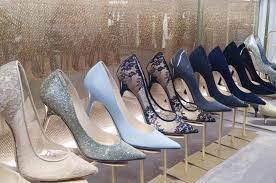 By now we might be confident in believing what women really want are: shoes. However, shoes rarely, if ever, fit and if they ever do, they are too expensive. It is, therefore, known that an average woman, who can afford them, owns twenty pairs of shoes and more than half of them are never worn. It is as if a designer made something just for them; a coveted work of art to be looked at, and perhaps occasionally touched. Psychologists, who surmise there is something deep and dark about women’s love of footwear, themselves have nothing else to offer except to keep buying them and putting into the wardrobe but never wear them.
By now we might be confident in believing what women really want are: shoes. However, shoes rarely, if ever, fit and if they ever do, they are too expensive. It is, therefore, known that an average woman, who can afford them, owns twenty pairs of shoes and more than half of them are never worn. It is as if a designer made something just for them; a coveted work of art to be looked at, and perhaps occasionally touched. Psychologists, who surmise there is something deep and dark about women’s love of footwear, themselves have nothing else to offer except to keep buying them and putting into the wardrobe but never wear them.
Research also shows that one in five women admits to keeping shoes in the living room, scattered around the house, or even in the trunk of her car. An incredibly good friend kept hers in a filing cabinet at her office causing a massive problem the day the office manager moved her into a larger cubicle while she was out of the office. The two men tapped for the assignment wanted to file for combat pay when they went to lift the two-draw chest and were sore with muscle aches for the remainder of the week.
But really, it is just because those shoes are uncomfortable; and women want to be able to walk to the train without cringing and run for the bus without spraining their ankles. That is even though they may have never taken a train or ridden a bus for years. Some of them e.g., my friend above or one of her best friends who I continue to this day to have a schoolboy crush on, could even buy an expensive car or house with the amount of money they spend on their shoes. But homes and cars don’t make your legs look long and beautiful, do they?
If you are one of those who is still trying to understand the wearing of high heels at the airport, podiatrists also highlight that heels over two inches are a risk factor for chronic foot and ankle pain. Nonetheless, more women than men suffer pain from their footwear; and more women than men say that they are prepared to suffer for the sake of their shoes. When heels were first added to shoes in the 1590s, they were only about an inch high and expressed the status of the wearer. Heels were reintroduced on ladies’ footwear during the late 1850s but did not find universal appeal until the late 1870s.
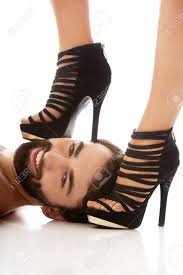
Women’s liberation was reflected in the high heels and the elevated soles that put women on an equal footing with men; therefore, they are not planning to give that up in a hurry. Podiatrists also say that women’s shoes are tighter because they are designed to fit firmer around the toes and the heel. They are especially made to make women’s feet look as slim as possible. The trick is that if you bring the shoes home and they are still too tight, take them to a shoemaker to stretch them. Just keep in mind that natural fabrics like leather stretch more than synthetics. This may also debunk the common myth that flats are always better for you than heels.
Like I said earlier, I love women and their shoes. Maybe because I have my own shoe issues. I always bought the wrong shoes for work. When I was living in New York City for example, there I was walking around those streets with my Paul Stuart Men’s Tassel Slip-On loafers. They looked great but the end of the month was tough when I saw the Visa bill while staring at the past due rent bill. (On a side note, the shoes did not take very well to the streets of New York. They required that I buy them friends so I did not wear that one pair as often. Rent be damned!)
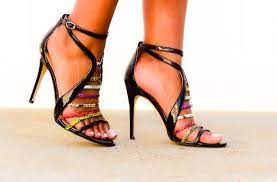
So, let’s visit some more history of females and their shoes. By the way, when I say females, I think of that beautiful woman from the example above who I still have a crush on. She always rocked the stileto’s.
Black, brown, and white footwear predominated until the 1920s. Colored footwear was made almost entirely for evening dress, as it was seen as inappropriately gaudy for street or daywear. After the start of World War I in 1914, hemlines began a steady climb up the leg, so that by armistice the sensuous curves of the instep and ankle were exposed. The climbing hemline made the gap between the top of the boot and bottom of the hemline an unsightly distraction. The boot was generally abandoned from fashion, although a “Cossack” boot, or pull-on style was introduced and found some success in the late 1920s.
The impact of the shoe on the complete silhouette now had to be calculated to find a complimentary style. During the 1920s, short and curvy heels grew taller and straighter, which tightened the calf muscle, slimming the appearance of the ankle and foreshortening the foot making it appear smaller. Even the vamp was cut lower to expose more of the instep.
By the 1930s, shoemakers had become shoe designers. Color, shape, and decoration literally exploded at the feet of fashion. A wide variety of spectators, oxfords, pumps, sandals, brogues, and other styles filled the shoe stores. Salvatore Ferragamo revived the chopine in 1937, using cork to create platform soles. Internationally, the style found limited success, but with the beginning of World War II (1939-1945) the style grew in popularity. The war resulted in a shortage of leather for civilian footwear; thick wood or cork soles and substitute leather uppers made of raffia, hemp, or textile substituted. In the United States, where rationing was less severe than in Europe, platform shoes were more often made of leather, but women were rationed to two pairs of shoes per year.
The tall, tapered heel remained in fashion from the late 1920s to the mid-1950s with only subtle changes in form until the Italian heel, renamed the “stiletto,” became the fashion in the late 1950s. Tall and very slender with a metal core, the heel was named after the weapon for a reason. The narrow heel created pressure of hundreds of pounds per square inch with every step, pockmarking linoleum and wooden floors. Visitors to the Louvre were required to don plastic heel caps to protect the ancient floors. The stiletto heel, paired with a sharp pointed toe, was the most aesthetically complimentary shoe style ever designed. The pointed toe visually narrowed the foot and the high heel tightened the calf muscle, slimming the ankle. Medically, it was the worst combination ever created. Many women turned their ankles on the metal spikes, catching the tips in manholes, subway grates, or even cracks in the sidewalk; the high heel forced the foot forward into the pointed toe, which curtailed the toes, causing bunions and hammertoes.

In reaction, a low-heeled, square boot came back into fashion in the mid-1960s. Paired with miniskirts, the boot highlighted the leg and gave a youthful Élan to the fashions of the day. Boots came on the fashion scene at the same time as the popular “go-go” dances of the day and quickly became known as go-go boots-usually white ankle boots.
The early 1970s saw the return of the platform that accomplished two feats at once. Women’s liberation was reflected in the elevated soles that put women on an equal footing to men. At the same time, platforms were complimentary to the length of the leg, made apparent in hot pants, miniskirts, and long-legged pants. Think Marcia Brady. Long blond hair and the platform soles worked well with her miniskirts.
Since the early 1970s fashion footwear has been eclipsed by the sports-shoe phenomenon. More runners, joggers, cross-trainers, and basketball shoes have been sold than high-fashion shoes on an annual basis. Scientific advances in fit and comfort has been paired with conscious design and celebrity marketing, creating a mad frenzy for every new design released. Fashion experts may scoff at sports shoes as fashion, but many designers have paid homage to the style in upscale versions over the past thirty years.
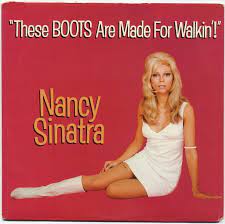
High-fashion footwear of the last quarter of the twentieth century consisted almost entirely of revivals. The stiletto-heeled, pointed-toe shoe of the late 1950s and early 1960s was the mainstream high-fashion style of the late 1980s and early 1990s. Every time the platform shoe has come back into fashion it has been heavily inspired by its previous incarnation. The platform shoes of the 1990s were many times perfect recreations of their 1970s predecessors, to the point where it was nearly impossible to tell the difference between the retro and the true vintage versions.
Subtle tweaking of heel shapes, toe shapes, decorations, colors, and materials, and the combinations in which they are used are the only elements that define the past thirty years of fashion footwear from previous styles. Multiplicity is key to the fashion footwear of the early 2000s: stilettos, platforms, chunky heels, low heels, pointed toes, square toes, boots, shoes, and ballerina flats. Virtually all styles are available at the same time, and all of them are at the height of fashion.
As far as men are concerned, most will never understand that, for a woman, the only difference between everybody and somebody is all the shoes. Men remain happy with the old jokes, “Before you judge a man, walk a mile in his shoes. After that who cares. He’s a mile away and you’ve got his shoes.” Women on the other hand would tell you that a pair of great heels was much more satisfying than a man. They lasted longer, and better yet, they did not leave us for someone younger and prettier.
Some women obsess over handbags, but for others shoes are the apple of their eye. From Victoria Beckham to Jimmy Choo and so many other style icons in between, it’s time to get inspired by footwear designers and fashion icons…
So let’s get out some final thoughts. Cinderalla said it best, “‘One shoe can change your life.”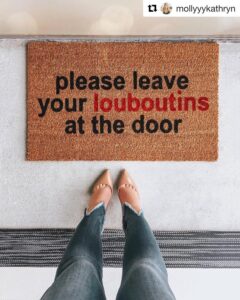
Imelda Marcos claims to have been misquoted. “I did not have three thousand pairs of shoes, I had one thousand and sixty.”
Carrie Bradshaw had a roommate, it was her shoes. So, naturally her answering machine message was as follows. “Hi! I’m not here right now, but my shoes are, so leave them a message.”
Christian Louboutin looked directly into the camera. “I would hate for someone to look at my shoes and say, “Oh my God! They look so comfortable!”
Seconds later Manolo Blahnik turned into the same camera. “Men tell me that I’ve saved their marriages. It costs them a fortune in shoes, but it’s cheaper than a divorce.”
And remember this, “Girls can do anything boys can do. And they look better because they can do it in high heels.”

